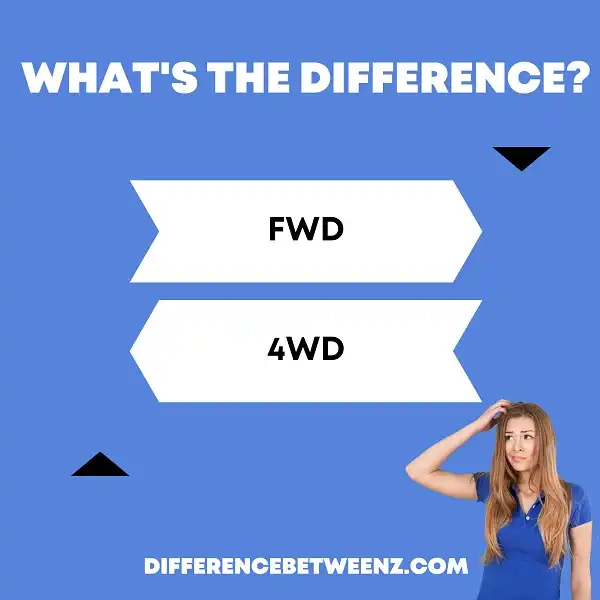When you are driving in the snow, it is important to have the right type of car. You may be wondering what the difference between FWD and 4WD is. In this blog post, we will discuss the difference between FWD and 4WD cars and which one is better for driving in the snow.
What is FWD?
FWD drivetrains are a popular choice for many modern vehicles. FWD stands for front-wheel drive, and as the name suggests, FWD drivetrains power the front wheels of a vehicle. FWD drivetrains are often found in smaller vehicles, as they offer excellent fuel economy and maneuverability. FWD drivetrains also have the advantage of being very lightweight, which helps to improve fuel efficiency even further. However, FWD drivetrains can suffer from traction issues in certain conditions, such as when driving on wet or icy roads. As a result, many FWD-equipped vehicles are equipped with winter tires or all-wheel drive.
What is 4WD?
4WD, or 4-wheel drive, is a vehicle propulsion system that allows all four wheels to receive power from the engine simultaneously. 4WD systems are typically used in off-road vehicles and trucks, as they allow for greater traction and stability on rough terrain. 4WD can be engaged and disengaged as needed, depending on the driving conditions. 4WD is different from the all-wheel drive (AWD), which is a similar system but one that is always engaged. While 4WD provides superior traction and stability, it can also result in increased fuel consumption and wear on the vehicle’s tires and suspension. As a result, 4WD should only be used when necessary.
Difference between FWD and 4WD
FWD and 4WD are the two most common types of drivetrains found in cars and trucks. FWD, or front-wheel drive, means that the engine powers the two front wheels of the vehicle. 4WD, or four-wheel drive, means that the engine powers all four wheels of the vehicle. FWD is typically more fuel-efficient than 4WD because it doesn’t require as much power to move the vehicle.
FWD is also generally better suited for driving on pavement because it doesn’t require as much traction as 4WD. However, 4WD is necessary for driving on unpaved surfaces such as dirt roads or off-road trails. 4WD is also helpful for towing or hauling heavy loads. When selecting a FWD or 4WD vehicle, it’s important to consider what type of driving you’ll be doing most often.
Conclusion
If you’re in the market for a new car, it’s important to understand the difference between front-wheel drive (FWD) and four-wheel drive (4WD). FWD cars are cheaper and more fuel efficient, while 4WD cars offer better performance off-road. Ultimately, the decision comes down to what you need your car to do. Do you live in an area with lots of snow and ice? You may want a 4WD car. Are you looking for something that can handle long commutes without breaking the bank? A FWD car is probably right for you.


